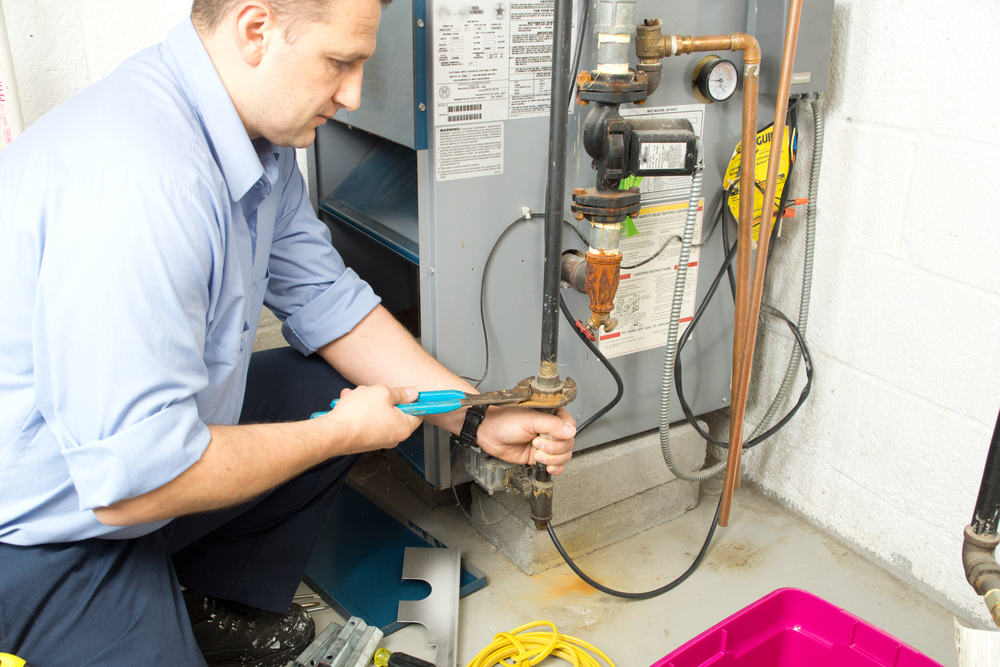Why Does Your Home Need a New Furnace Before Winter Hits?

Homeowners in Ottawa and the surrounding regions know the importance of reliable home heating. During the winter months, an inefficient or outdated furnace can cause serious discomfort, inconsistent room temperatures, and rising utility bills. Many people continue to patch up old systems, unaware that a complete furnace replacement could solve multiple problems at once. Whether your furnace is past its prime or you’re building a new home, professional installation plays a crucial role in keeping your space warm, efficient, and safe.
Valley Home Appliance Service offers comprehensive furnace installation services, ensuring your home remains a warm and comfortable space all season long. In this blog, we break down the essentials of residential furnace installation—from why it matters to what to expect.
Table of Contents
- Why a New Furnace Is Worth the Investment
- Common Signs Your Furnace Needs Replacement
- Types of Furnaces and How to Choose
- Why You Shouldn’t DIY Installation
- Our Residential Furnace Installation Process
- Cost and Efficiency Table
- Post-Installation Tips
- Final Thoughts and Service Recommendations
Why is a New Furnace Worth the Investment?
Many homeowners avoid furnace replacement because of the upfront cost. However, the long-term benefits often outweigh the initial expense. A new furnace can significantly reduce energy usage, improve air quality, and provide consistent heat distribution. Older systems are not only less efficient but can also pose safety risks if not functioning properly.
More importantly, newer furnaces come with higher AFUE (Annual Fuel Utilization Efficiency) ratings, which means more heat is generated with less fuel. This translates into monthly energy savings and fewer repairs over time.
Common Signs Your Furnace Needs Replacement
Before your furnace gives out entirely, it usually offers some warning signs. Paying attention to these can save you from an unexpected breakdown:
- The system is over 15 years old
- Rooms heat unevenly or not at all
- Unusual banging, rattling, or humming sounds
- Increasing need for repairs and part replacements
- Spikes in heating bills without lifestyle changes
- Constant cycling (turning on and off frequently)
If you’ve noticed one or more of these issues, it may be time to consider a new installation.
Types of Furnaces and How to Choose
When selecting a new furnace, it’s important to match the unit with your home’s size, insulation level, and fuel availability. There are three main types of residential furnaces:
- Gas Furnaces: Popular in colder climates for their affordability and performance. They offer quick, powerful heat and operate at high efficiency levels.
- Electric Furnaces: Easier to install and maintain, these are great for milder climates and smaller homes. Though generally cheaper upfront, their long-term electricity usage can be higher.
- Oil Furnaces: These are less common but still used in rural homes without natural gas lines. They are durable and effective but require more maintenance.
Why You Shouldn’t DIY Installation?
Though online tutorials may make furnace installation look manageable, it’s a complex task requiring knowledge of gas lines, ventilation, and electrical systems. Errors in installation can lead to dangerous carbon monoxide leaks, poor performance, or even fire hazards. Hiring a licensed technician not only ensures safety but also preserves the manufacturer’s warranty.
Our Residential Furnace Installation Process
At Valley Home Appliance Service, we follow a streamlined and proven installation process to ensure quality and safety:
- Step 1: Home Assessment
We begin by evaluating your home’s square footage, insulation quality, and existing ductwork.
- Step 2: Furnace Selection
Based on your needs and budget, we recommend a furnace with optimal capacity and efficiency.
- Step 3: Removal of Old System
Our technicians safely remove the existing unit and dispose of it in accordance with environmental guidelines.
- Step 4: New Installation
We install the new furnace, connect it to your gas or electrical line, and ensure the ductwork is sealed and optimized.
- Step 5: Testing and Fine-Tuning
The system is tested for functionality, airflow balance, and safety features before final handover.
Cost and Efficiency Table
Here’s a quick look at what different furnace types may cost and how they compare in energy use:
| Furnace Type | Installation Cost (Avg.) | Efficiency (AFUE) | Ideal For |
| Gas Furnace | $3,000 – $6,000 | 90% – 98% | Medium to large homes |
| Electric Furnace | $1,500 – $3,500 | 95% – 100% | Small to medium homes |
| Oil Furnace | $4,000 – $7,000 | 80% – 90% | Rural/older properties |
These costs vary depending on brand, features, and installation complexity.
Post-Installation Tips
To ensure your new system performs at its best, a little maintenance goes a long way:
- Replace air filters every 2–3 months
- Schedule an annual inspection before winter
- Keep vents unblocked by furniture or rugs
- Watch for changes in airflow or noise levels
- Clear the area around your furnace of clutter
These small habits can extend the life of your furnace and keep your indoor environment safe and clean.
Trust the Pros for Year-Round Comfort
Investing in a new furnace is a decision that improves your home’s comfort, efficiency, and safety. With Valley Home Appliance Service, you’re not just getting a new unit—you’re getting professional guidance, trusted installation, and peace of mind for the years ahead.
So, if looking for help with more than just heating? We also specialize in small appliance repair Ottawa to keep every part of your home functioning smoothly.
Contact us today to schedule your residential furnace consultation. Let us help you turn your home into a warm, energy-efficient retreat—just in time for winter.

